
Use our Employment Contract to hire an employee for your business, and define details like wages and working hours.

Updated August 26, 2024
Written by Josh Sainsbury | Reviewed by Brooke Davis
An Employment Contract (or employment agreement) is a legally binding agreement between an employer and employee that defines compensation, duration, benefits, and other conditions of the employment relationship. It outlines the rights and responsibilities of both parties during the employee’s tenure.
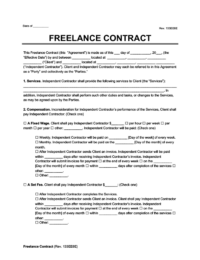
Use a freelance contract to hire self-employed workers for your business or a specific project.
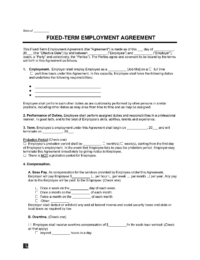
Hire temporary or seasonal staff, with clear terms on pay and set duration until the contract's end.
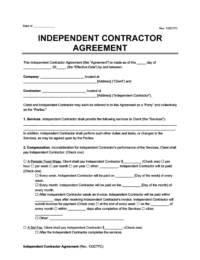
Create a contract between a company and a contractor with an independent contractor agreement.
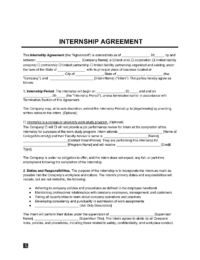
Use an Internship Agreement to ensure both parties know what is expected of them if you’re hiring an intern.
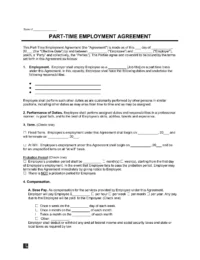
List the responsibilities, expectations, and rights of the employer and part-time employee.
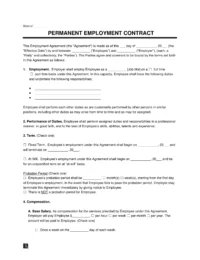
For employees who will work regular hours (part-time or full-time), are paid a salary or hourly rate, and are ongoing until terminated by either the employer or the employee.
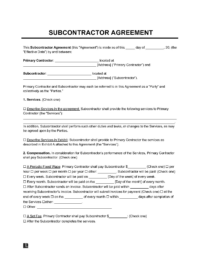
A document used when the contractor on a project needs to subdivide the contract and assign part of the work to other companies or individuals
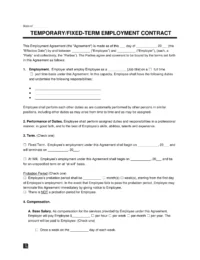
For employees that work part-time or full-time and are employed for a fixed period of time or are employed temporarily with no fixed end date but termination is expected on notice.
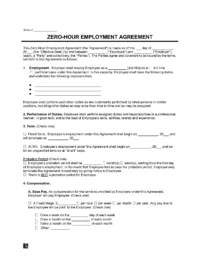
Hire employees without guaranteeing any specific working hours.
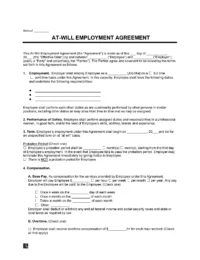
Hire an employee that works with no set end date.
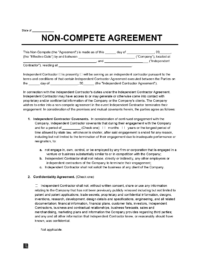
Use it to protect a company's competitive advantage by restricting an employee or former employee from working for a competitor.
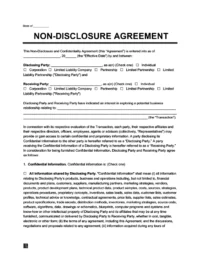
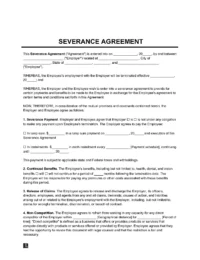
Use it to outline the terms of the end of an employer-employee relationship.
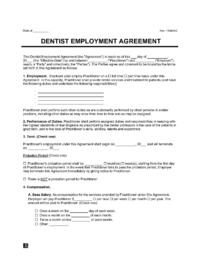
Use a Dentist Employment Contract iff you need to hire more dentists to help serve your clients.
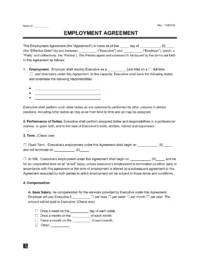
Outlines contractual obligations and expectations between a usually highly compensated executive and an employer. It is typically negotiated between the two parties and can involve legal assistance.
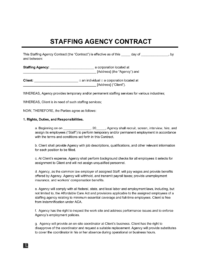
Outlines a relationship between a staffing agency and a company to recruit and staff.
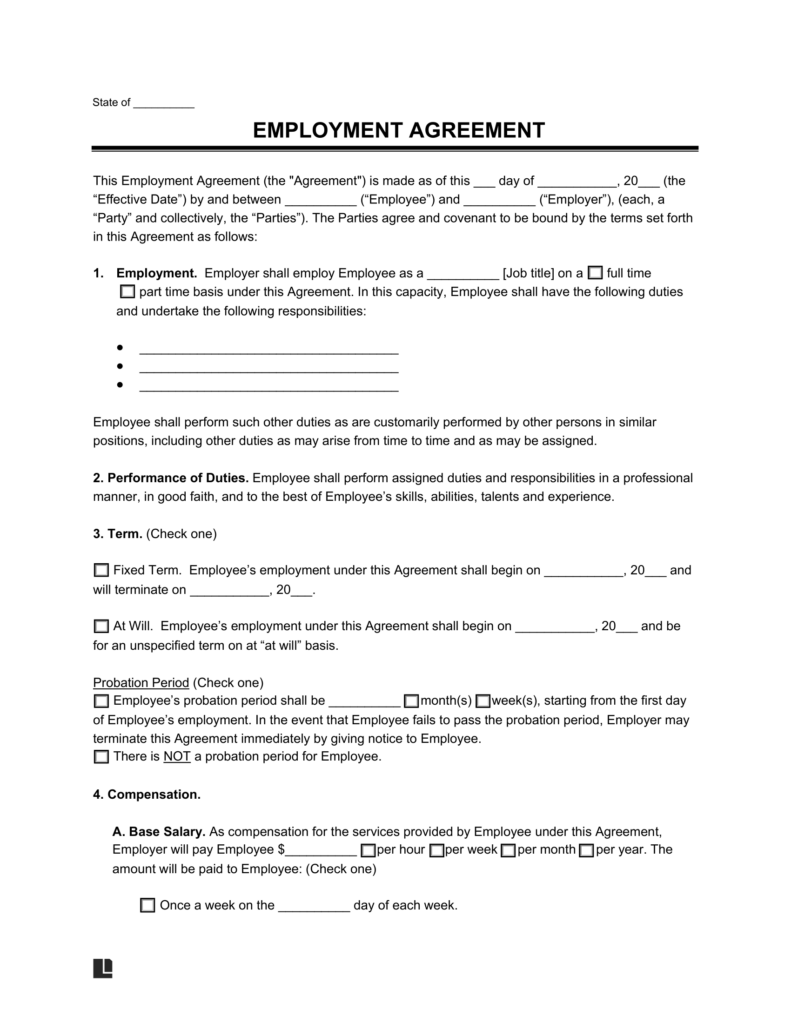
An employment contract recognizes a legal business relationship between an employer and an employee. The employment contract outlines the rights and responsibilities of both parties for the duration of employment.
For example, the functions an employee will perform and the wages the employer agrees to pay in return.
Before issuing an Employment Agreement, you should request that the candidate provide an Employment Verification Letter to verify their income and employment history.
If you’re seeking an employment contract in Spanish, use our Contrato de Trabajo.
An employment contract will identify the following essential elements:
Documenting clear expectations, job responsibilities, and employment agreements allows employers to discipline and fire employees who do not meet work performance standards.
An employment contract offers legal protection to both an employee and an employer. If a dispute arises, both parties can refer to the original terms agreed to at the beginning of the working relationship.
By drafting an employment contract today, avoid mistreatment and legal repercussions for both parties.
Company: Tech Solutions Inc.
Employee: Alex Johnson
1. Position and Duties
Alex Johnson is hired as a Senior Software Developer. Alex will be responsible for leading software development projects, mentoring junior developers, and collaborating with the product team to design new features. Additional tasks may include code reviews and contributing to the technical roadmap.
2. Term of Employment
Alex’s employment will begin on September 1, 2024, and will continue until terminated by either party according to the terms outlined in the contract.
3. Compensation
Alex will receive an annual salary of $90,000, paid in bi-weekly installments. Alex will also be eligible for an annual performance bonus up to 10% of the base salary, based on performance metrics.
4. Benefits
Alex will be enrolled in Tech Solutions Inc.’s health insurance plan, with coverage for medical, dental, and vision. Additionally, Alex will have access to the company’s 401(k) plan with a 4% match, and will accrue 15 days of paid vacation per year.
5. Work Hours
Alex is expected to work 40 hours per week, from 9:00 AM to 6:00 PM, Monday through Friday. Occasional overtime may be required for project deadlines.
6. Confidentiality
Alex agrees to keep all proprietary and confidential information about Tech Solutions Inc.’s projects and technology confidential, both during and after the term of employment.
7. Termination
Either Tech Solutions Inc. or Alex can terminate the employment relationship with 30 days’ written notice. Immediate termination can occur in cases of misconduct, such as breach of confidentiality or violation of company policies.
8. Governing Law
The contract will be governed by the laws of the State of California.
9. Entire Agreement
This document represents the complete agreement between Tech Solutions Inc. and Alex Johnson, superseding any prior agreements or communications.
10. Amendments
Any changes to this agreement must be made in writing and signed by both parties.
Signatures:
Tech Solutions Inc.
By: ___________________________
Name: Jamie Lee
Title: HR Manager
Alex Johnson
By: ___________________________
Name: Alex Johnson
You may want to include additional clauses to help protect business interests:
If you’re a US company hiring citizens and residents, there are IRS requirements you need to follow:
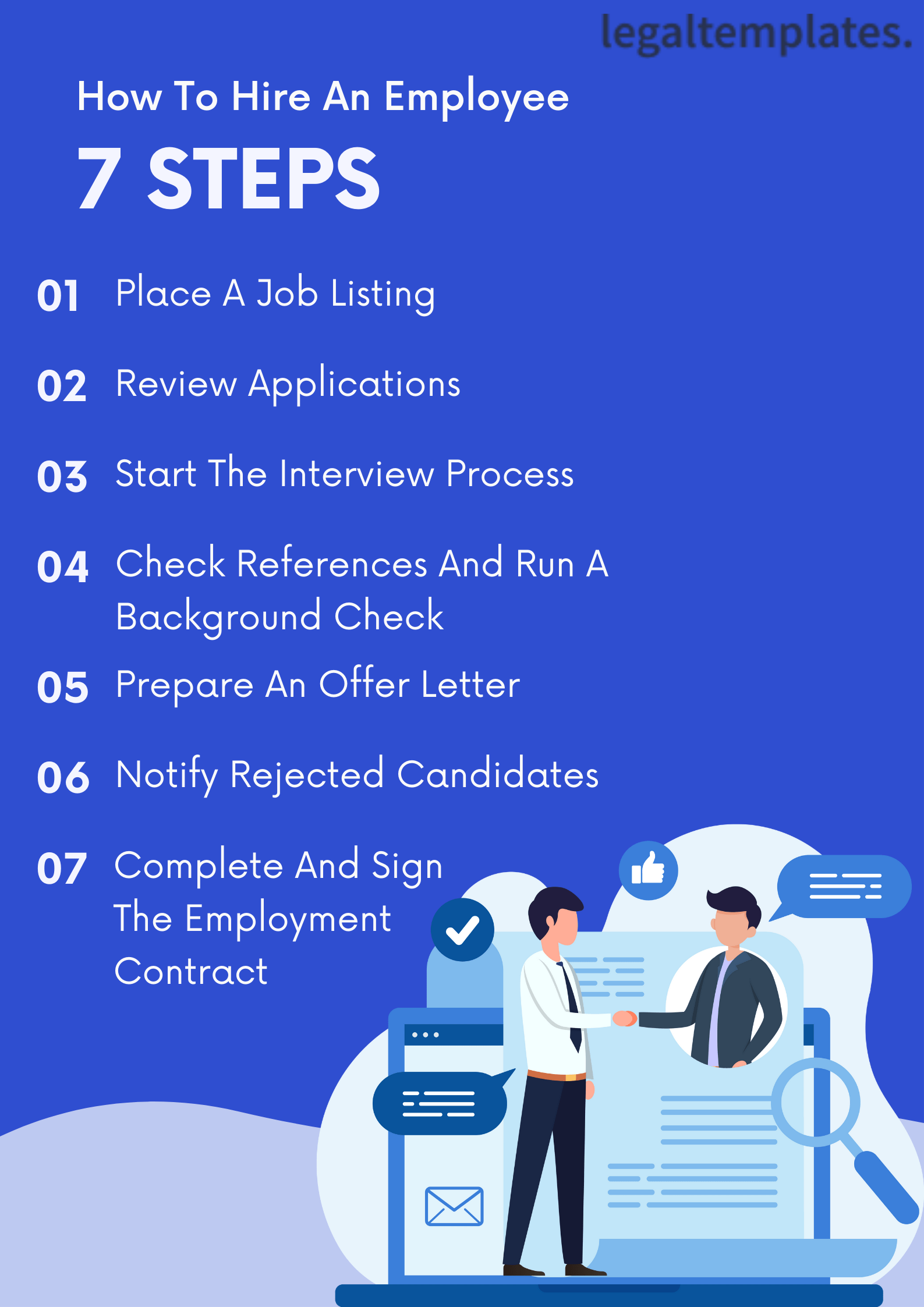
The best way to hire an employee is to follow these simple steps:
Make an employment posting that details your expectations of the individual and the job’s compensation. In some states, you must disclose the pay range in job postings due to pay transparency laws. Also, include an Equal Opportunity Statement in your job posting to encourage applicants from diverse backgrounds to apply.
You have several options for posting job listings. Many employers use online job sites like LinkedIn, Indeed, CareerBuilder, or Monster. Recruiters also can assist with finding eligible candidates for any vacant roles in your company. Maximize visibility by sharing your job listing on social media.
Filter through the received job applications, setting aside the ones that meet the job’s essential requirements. To narrow down the pool, you can run applications through AI tools. Data extraction programs scan resumes to search for specific keywords. The program can eliminate applicants who don’t have the experience or education required for the role.
Set up interviews with the top candidates. You need to know the person behind the application and whether they will fit your company well. A phone chat works best for an initial interview to review the job’s basics. Avoid wasting your and the applicant’s time if the salary and expectations don’t work for either party.
If any phone interviews go well, you can move on to a formal interview in person or via video chat. Come up with a list of questions that touch upon:
Checking references is a great way to verify applicants and gain additional insights into their work experience and qualifications. Background checks alert you to past criminal issues that could affect the person’s candidacy. You also want to confirm that the person is legally eligible to work in the United States. An I-9 form will verify employee eligibility.
Once you’ve chosen the perfect candidate, send them an employment offer letter. The employment offer letter typically states:
Based on the inclusions, the candidate may wish to negotiate terms before agreeing.
Most states have created and enforced laws that exceed the federal minimum wage under the Fair Labor Standards Act (FSLA).
| State | Minimum Wage |
|---|---|
| Alabama | $7.25 (Federal Minimum) |
| Alaska | $10.85 (Effective 1/1/2023) |
| Arizona | $13.85 (Effective 1/1/2023) |
| Arkansas | $7.25 (Less than 4 employees) $11.00 (4 or more employees) |
| California | $15.50 (Effective 1/1/2023) |
| Colorado | $13.65 (Effective 1/1/2023) |
| Connecticut | $15.00 (Effective 6/1/2023) |
| Delaware | $11.75 (Effective 1/1/2023) |
| District of Columbia (D.C.) | $17.00 (Effective 7/1/2023) |
| Florida | $12.00 (Effective 9/30/2023) |
| Georgia | $7.25 (Federal Minimum) $5.15 (for some limited FLSA exceptions) |
| Hawaii | $12.00 |
| Idaho | $7.25 (Federal Minimum) |
| Illinois | $13.00 (Effective 1/1/2023) |
| Indiana | $7.25 (Federal Minimum) |
| Iowa | $7.25 (Federal Minimum) |
| Kansas | $7.25 (Federal Minimum) |
| Kentucky | $7.25 (Federal Minimum) |
| Louisiana | $7.25 (Federal Minimum) |
| Maine | $13.80 (Effective 1/1/2023) |
| Maryland | $12.80 (Effective 1/1/2023) (Less than 15 Employees) $13.25 (Effective 1/1/2023) (15 or more Employees) |
| Massachusetts | $15.00 (Effective 1/1/2023) |
| Michigan | $10.10 (Effective 1/1/2023) |
| Minnesota | $8.63 (Effective 1/1/2023)(Companies earning gross revenue less than 500k) $10.59 (Effective 1/1/2023)(Companies earning gross revenue of more than 500k) |
| Mississippi | $7.25 (Federal Minimum) |
| Missouri | $12.00 (Effective 1/1/2023) |
| Montana | $9.95 (Effective 1/1/2023) |
| Nebraska | $10.50 (Effective 1/1/2023) |
| Nevada | $10.25 (Effective 7/1/2023) (Offered Qualifying Health Benefits / Insurance) $11.25 (Effective 7/1/2023) (NOT Offered Qualifying Health Benefits / Insurance) |
| New Hampshire | $7.25 (Federal Minimum) |
| New Jersey | $14.13 (Effective 1/1/2023) |
| New Mexico | $12.00 (Effective 1/1/2023) |
| New York | $14.20 (Effective 12/31/2022) $15.00 (In New York City and Long Island / Westchester) |
| North Carolina | $7.25 (Federal Minimum) |
| North Dakota | $7.25 (Federal Minimum) |
| Ohio | $10.10 (Effective 1/1/2023) |
| Oklahoma | $7.25 (Federal Minimum) [10 or more full-time same location employees or employer grosses more than 100k per year] |
| Oregon | $14.20 Standard (Effective 7/1/2023) $15.45 (Portland) (Effective 7/1/2023) $13.20 (Non-Urban Counties) (Effective 7/1/2023) |
| Pennsylvania | $7.25 (Federal Minimum) |
| Rhode Island | $13.00 (Effective 1/1/2023) |
| South Carolina | $7.25 (Federal Minimum) |
| South Dakota | $10.80 (Effective 1/1/2023) |
| Tennessee | $7.25 (Federal Minimum) |
| Texas | $7.25 (Federal Minimum) |
| Utah | $7.25 (Federal Minimum) |
| Vermont | $13.18 (Effective 1/1/2023) |
| Virginia | $12.00 (Effective 1/1/2023) |
| Washington | $15.74 (Effective 1/1/2023) $17.27 (Effective 1/1/2023) (Seattle) $17.54 (Effective 1/1/2023) (SeaTac) |
| West Virginia | $7.25 (Less than 6 employees) $8.75 (6 or more employees) |
| Wisconsin | $7.25 (Federal Minimum) |
| Wyoming | $7.25 (Federal Minimum) |
Send an employment rejection letter to inform unsuccessful applicants of the bad news respectfully. Not all employers offer the courtesy, but it’s good practice to notify other candidates as soon as possible you don’t plan to move forward.
Once you and the candidate have discussed the terms, you can present the employment contract. When the contract is signed, you may want a notary public present for top-level positions.
Here’s a step-by-step to writing an employment contract:
a) List the date this agreement is being made.
b) Provide the full name of the employee and the full name of the company or individual employing the employee.
c) Provide the employee’s job title or position.
d) Choose whether the employee will be employed part-time or full-time.
e) Describe the job duties the employee will be responsible for.

a) Choose whether the employment will be fixed, at will, or probationary:
b) Choose whether or not there will be a trial period where an employee may be released if they cannot meet the job requirements. This typically lasts for three to six months.

a) List the employee’s salary here and how the payment will accumulate.
b) Check the frequency at which the employee’s salary will be paid.

a) If the employee will receive overtime compensation, choose this option and list how much will be paid and describe what frequency constitutes overtime.
b) Choose this option if the employee will not receive overtime pay. Be sure to check federal and state laws to determine whether or not overtime is mandatory in your situation.
c) Choose this option and explain any commission received for services rendered under this agreement.
d) Choose this option and explain any other commissions received for services rendered under this agreement.
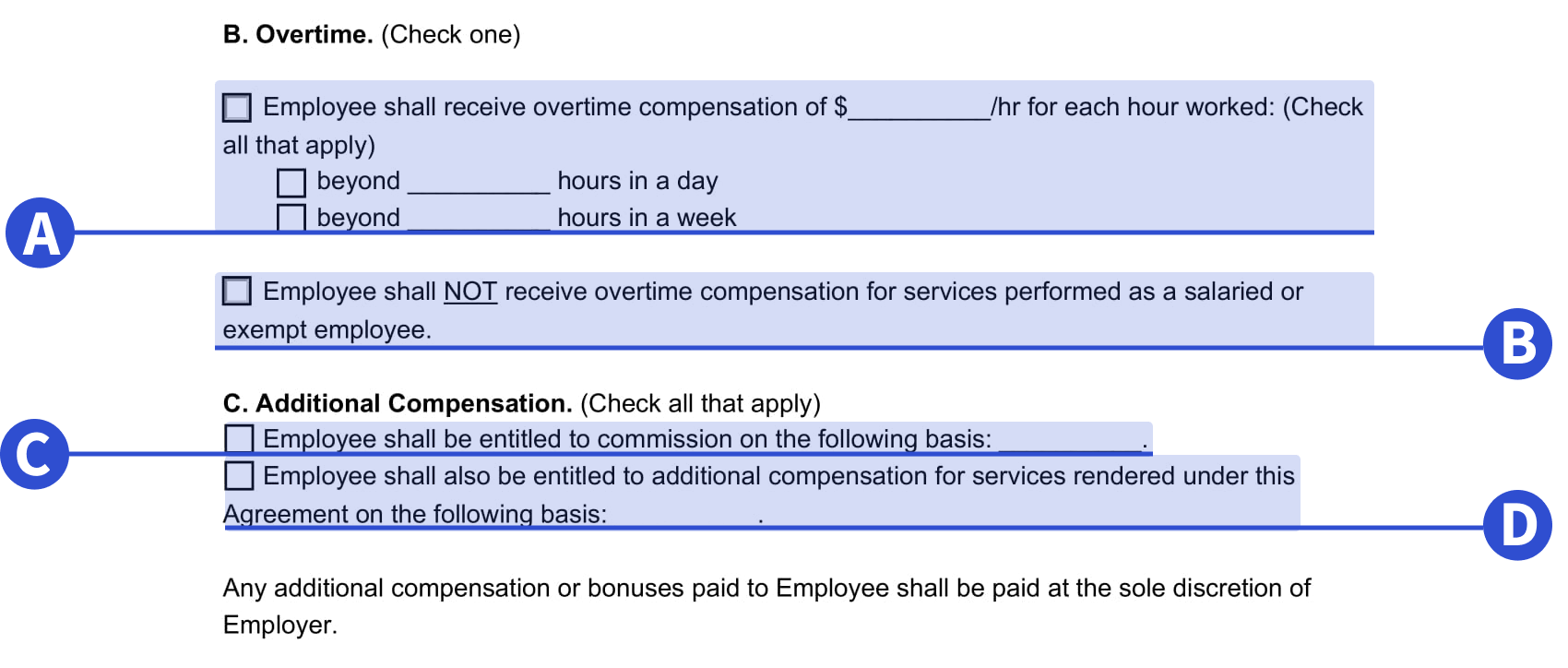
a) Check if the employer will reimburse an employee for the expense(s).
b) Check all expenses that the employer will reimburse the employee for.
c) List the full address where the employee will perform their duties under this agreement.
d) List the required work days and hours.
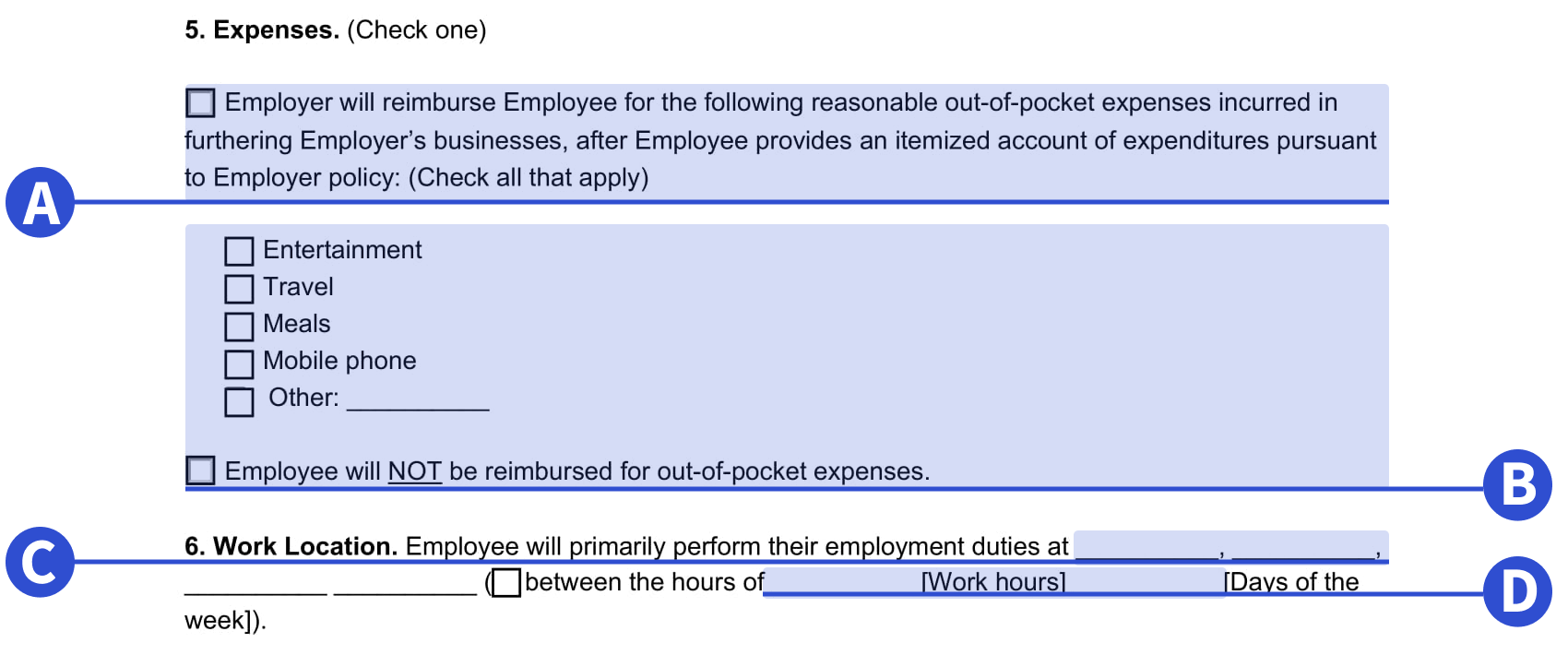
a) This option lists specific paid time off days allowed.
b) Choose this option to default to state and local law requirements for paid time off.
c) This option lists a certain number of paid sick days allowed.
d) Choose this option if the employee is not provided any sick leave.
e) This option lists a certain number of paid personal days allowed.
f) Choose this option if employees are not provided paid personal leave days.
g) List any other benefits provided.
h) Check if there is an employee handbook to refer to that will provide additional information about the employer’s leave policy.
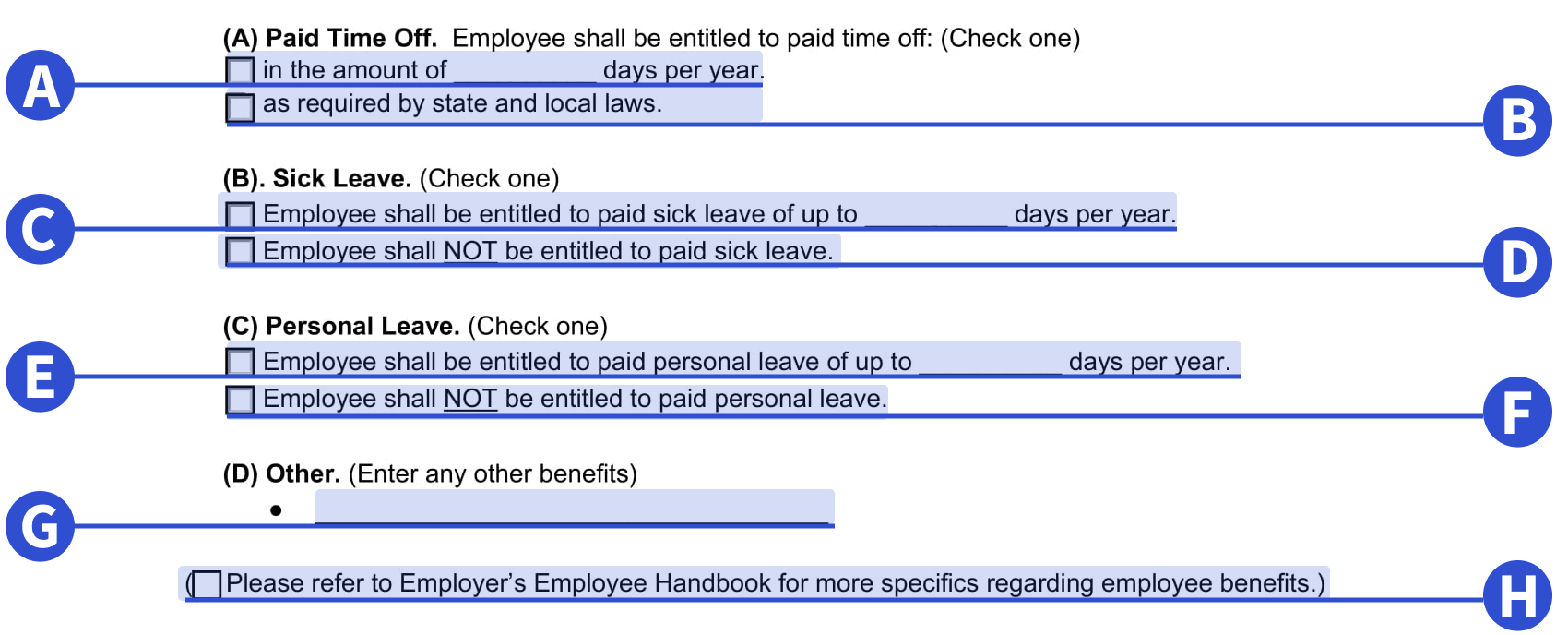
a) List how many days that employee cannot perform their duties that constitute consideration for disability benefits.
b) Specify the amount of compensation due to the employee.

a) Initial here if you want to include this clause. Otherwise, cross it out.
b) Choose if the non-compete will remain in force for the entirety of the employment agreement and will end when the agreement is terminated or if the non-compete will stay in power beyond the termination of employment and list how many months it will remain in force beyond termination.
c) Check which activities are prohibited by the non-compete.
d) Choose this option if the employee is not exposed to sensitive information unknown to the general public.
e) Choose this option if the employee can access competitively sensitive information unknown to the general public.
a) Choose this if the employer can terminate the employment without cause.
b) Check if notice by the employer to the employee is required and list how many days’ notice is required.
c) Choose this option if the employee may terminate this agreement at any time but with written notice. List how many days’ notice is required.
d) Choose this option if the employee can terminate this employment agreement anytime and for any reason.

a) Choose this if the employee will be entitled to severance if terminated for reasons other than cause.
b) Choose this option if the employee is not entitled to severance after termination.
c) Check all applicable documents that set forth the rights and obligations of the parties.

a) List the state laws governing this agreement.
b) Choose this if litigation is a dispute resolution option and list the state where the dispute will be resolved.
c) Choose this if parties agree that the prevailing party will be entitled to recover its expenses incurred with any action taken regarding this agreement.
d) Choose arbitration if disputes will be resolved by a neutral third party selected by the parties, who evaluate the argument and determine a settlement. The decision by the arbitrator is final and binding.
e) Choose mediation if disputes will be resolved by using a mediator, a neutral third party selected by the parties who try to facilitate a compromise and agreement. The decision by the mediator is non-binding.
f) Choose this option if you wish to mediate first, and then if a resolution is not found, the arbitration will be pursued.
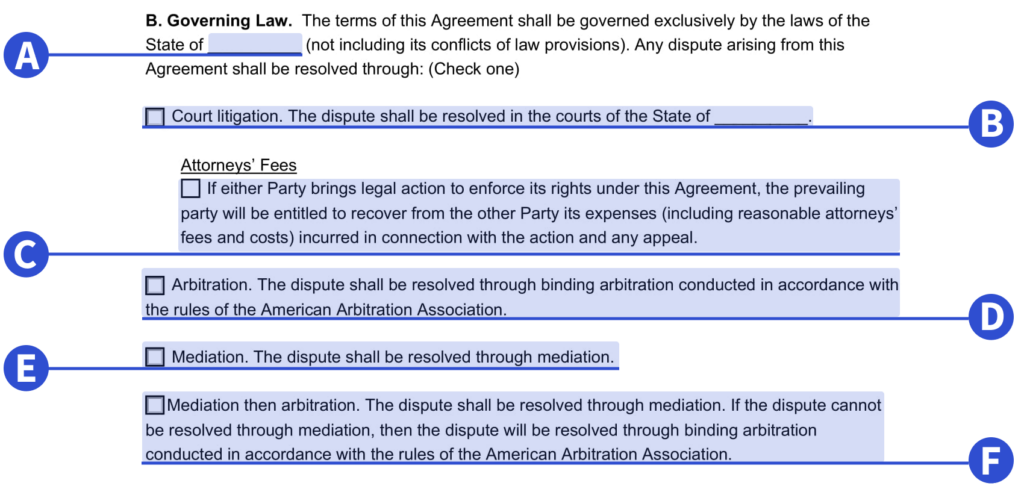
The employment agreement example below details an agreement between the employer, Susan C Clarke, and the employee, Rudolph M Hettinger. Susan C Clarke agrees to employ Rudolph M Hettinger as a Personal Assistant.
This sample letter of agreement between employer and employee Susan C Clarke and Rodolph M Hettinger will become legally binding once both parties sign.

Note: You should use an Independent Contractor Agreement if hiring a business or self-employed person to accomplish a short-term project or task.
A standard employment contract is a legal agreement that covers the rights and responsibilities of both the employee and employer. The standard contract covers the expected job duties of the employee and the duration of their employment.
Companies must have an assigned EIN before hiring new employees. Report new hires to your state’s registry by having each fill out a W-4 before starting work.
No, employees can’t get forced into signing an employment contract. Under many state laws, verbal agreements between parties can also be employment contracts. However, oral agreements can prove challenging to prove in court.
An employment contract can be amended, but a new one needs to be drawn up. The former agreement would become null and void. Both parties must agree to the terms and sign the new contract.
A court claim may be filed if one party fails to abide by the employment agreement terms. A breach of contract may allow the party to seek compensatory damages for any financial losses. The court could also order specific actions, like contract reformation.
The following are the basic documents you need to hire a new employee:
A probationary period is between three and six months. This is usually a good time to see if a new employee fits your company.
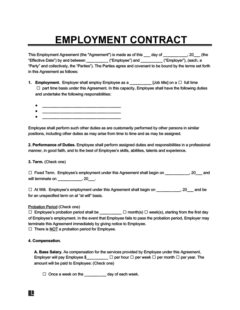
Create Your Employment Contract in Minutes!